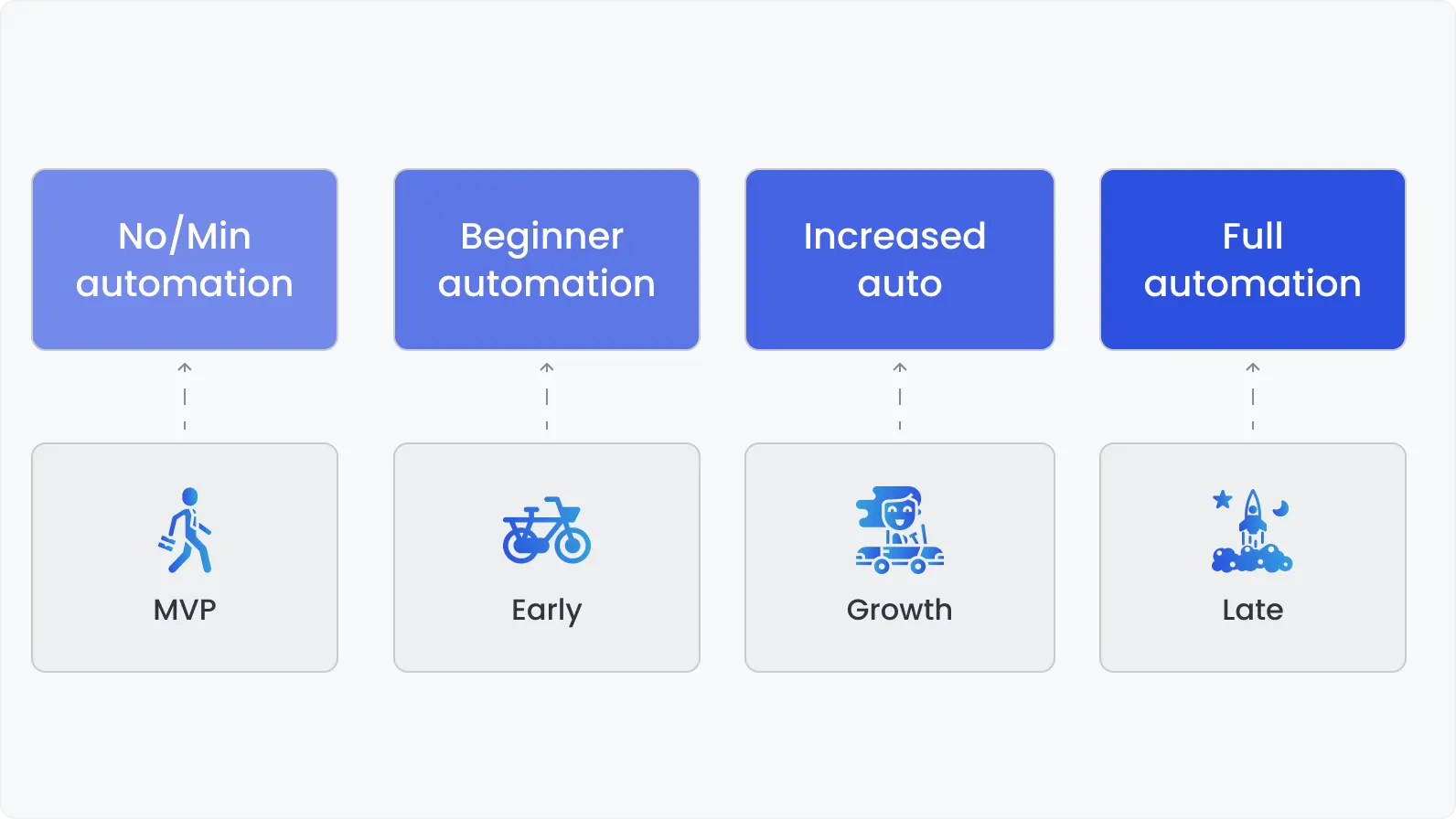3 minutes to read
When should startups invest in test automation, and do they really need it?


Anastasiia Sokolinska
Chief Operating Officer
First and foremost, we believe in honesty. As practicing engineers, we frequently encounter situations where companies are sold a "standard bundle" that includes testing services that may not always be necessary.
This bundle often consists of:
Manual QA engineer
Automation QA engineer (aka SDET)
QA lead
We understand why this happens: more services mean more revenue. However, this approach can damage your reputation, which is counterproductive for long-term relationships.
Startups, in particular, are more susceptible to this issue. We know how vulnerable they are and how sensitive their budgets can be. That’s why today, we’ll focus on when automation is really necessary for startups.
The stages of a startup
Startups can generally be divided into four stages of development:
MVP: The first version of the product with a minimal set of features.
Early-stage: Just beginning to develop the product and find a market fit.
Growth-stage: Scaling the product as it gains traction in the market.
Late-stage: Preparing for an IPO or large-scale expansion with a stable user base.

Resource needs by stage
Let’s break down the resources needed at each of these stages:
MVP:
Focus: Speed and stability.
Key resource: Manual QA engineer.
Role of QA: Create documentation, stabilize the product, and identify critical bugs.
Automation: Minimal or non-existent due to frequent changes and evolving product requirements.
Early-stage:
Focus: Refining the product and ensuring market fit.
Key resource: Combination of manual and partial automation.
Role of QA: Automate core functionalities to maintain stability, allowing manual QA to focus on exploratory testing.
Automation: Begin automating critical functions to balance quality with agility.
Growth-stage:
Focus: Scaling the product and delivering new features rapidly.
Key resource: Expanded test automation and CI/CD processes.
Role of QA: Implement and scale automation, ensuring smooth integration of new features.
Automation: Scale up automation to cover more areas, support rapid updates, and maintain product quality.
Late-stage:
Focus: Preparing for IPO or large-scale expansion.
Key resource: Full automation across development, testing, and deployment.
Role of QA: Ensure product stability and seamless scalability with high automation levels.
Automation: Full automation is essential to support continuous delivery, minimize errors, and maintain reliability as the product scales.

To sum it up
As your startup evolves, so will your QA requirements. The difference between these stages can vary from a few months to a year. Bringing in the right specialists at the right time can save you up to 50-70% of your testing budget while delivering results faster. Additionally, investing in early-stage startup software testing can prevent costly rework later on, ensuring that your startup's product is reliable and scalable as it gains traction.
Choose the right timing for your resources. And remember, we're always here to help if you need real professionals on your team.
Don't let bugs define your story - release confidently with DeviQA

